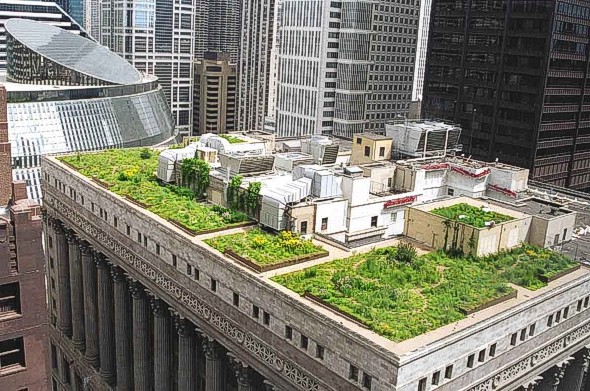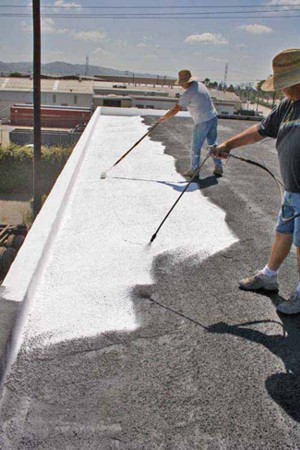Changing Black Roof to White or Green Creates Natural Building Cool Down Effect, Says Study
 May 25, 2010
May 25, 2010  Kyriaki (Sandy) Venetis
Kyriaki (Sandy) Venetis  Intensive green roof system at Chicago City Hall. Photo courtesy of Elements Roofing, LLC.
Intensive green roof system at Chicago City Hall. Photo courtesy of Elements Roofing, LLC.
It’s common sense to most of us that if we wear lighter colored breathable clothes, we’ll feel cooler when we’re outside in the summer heat. Well as it turns out, the same principle also applies to the buildings that we live and work in.
Testing this idea on its own properties, the energy company Con Edison in its effort to create both more energy efficiency within its own corporate structure and combat global warming, commissioned a study by Columbia University to measure temperature differences and other data from the three roof types.
The three different roof types were monitored and tested (and are continuing to be tested) as part of a long term study of there effectiveness. The white roofs were installed at the company’s headquarters in Manhattan and its Learning Center in Long Island City, N.Y., where the green roof was also installed.
 Photo by the www.infrastructurist.com.
Photo by the www.infrastructurist.com.
The black and white roofs are made of the same material, ethylene-propylene-diene-monomer, with color being the only difference. The green roof consists of 21,000 plants in four-inch deep modular sedum systems.
The sedum is a large plant group containing around 400 species found throughout the northern hemisphere, varying from creeping herbs to shrubs. The plants have water-storing leaves.
The Columbia study found that, “The white membrane temperature peaks are on average 30 °F (17 °C) cooler than black in summer. [The] green roof membrane temperature peaks are on average 60 °F (33 °C) cooler than black in summer.”
Researchers in the study said, “We estimate that the 10,764 sq. ft green roof on the Con Ed building is saving roughly $400/yr in heating costs and $250/yr in cooling costs. If this area had been a white roof instead, we estimate that cooling savings would have been $200/yr.”
